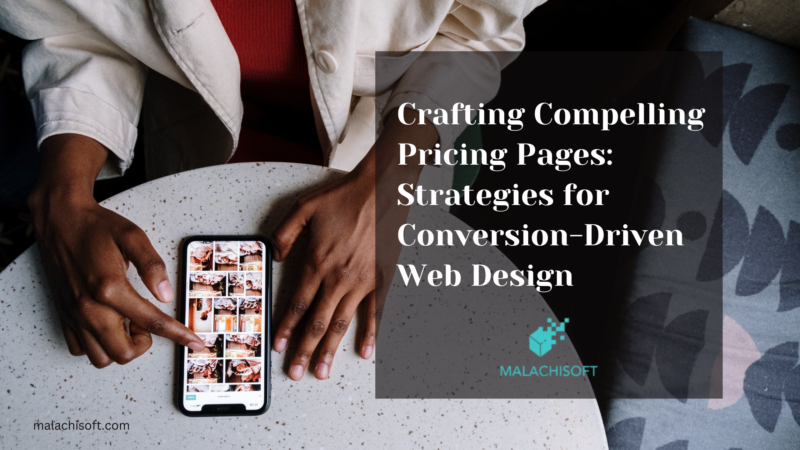Introduction:
In the fast-paced world of online business, a well-designed pricing page can make a significant impact on the success of a website. A pricing page is often the final hurdle between a potential customer and a conversion. Therefore, it is crucial to implement strategies that not only attract but also engage and convert visitors. In this blog, we’ll explore key strategies for designing effective pricing pages that optimize user experience and boost conversion rates.
- Clarity and Simplicity:
- Ensure that your pricing page is clear, concise, and easy to understand. Use straightforward language and avoid jargon that might confuse visitors.
- Present pricing plans in a simple and visually appealing manner, using clean design and intuitive navigation. Break down information into digestible sections.
- Highlight Key Features:
- Clearly showcase the features and benefits of each pricing tier. Use bullet points, icons, or short descriptions to emphasize the value proposition of each plan.
- Consider using visuals like icons or images to make features more memorable. Visual elements can help visitors quickly grasp the offerings of each plan.
- Provide Pricing Transparency:
- Avoid hidden fees or unclear terms. Be transparent about the costs associated with each plan, including any additional charges or limitations.
- Offer a detailed breakdown of what is included in each pricing tier, making it easier for potential customers to compare and choose the plan that best fits their needs.
- Call-to-Action (CTA) Optimization:
- Place prominent and compelling CTAs strategically throughout the pricing page. Use action-oriented language to encourage visitors to take the next step.
- Consider using contrasting colors for your CTAs to make them stand out. A well-designed CTA can significantly impact conversion rates.
- Free Trial or Demo Option:
- Provide a free trial or demo option whenever possible. Allowing potential customers to experience your product or service firsthand can help build trust and increase the likelihood of conversion.
- Clearly communicate the trial duration and any limitations to set proper expectations.
- Testimonials and Social Proof:
- Integrate customer testimonials, reviews, or case studies on your pricing page. Positive feedback from existing customers can instill confidence in potential buyers.
- Display logos of well-known clients or industry affiliations to showcase credibility and establish trust.
- Responsive Design:
- Ensure your pricing page is optimized for various devices, including desktops, tablets, and smartphones. A responsive design ensures a seamless user experience across different platforms.
- Test the functionality and appearance of your pricing page on multiple devices to guarantee a consistent and user-friendly presentation.
- Dynamic Pricing Options:
- Consider incorporating dynamic pricing options or personalized recommendations based on user behavior or preferences. Tailoring the offerings to individual needs can enhance user satisfaction and conversion rates.
- Implementing a scalable pricing model that allows for flexibility as a user’s requirements evolve can also contribute to long-term customer retention.
Conclusion:
Designing an effective pricing page is a critical component of a successful online business strategy. By prioritizing clarity, transparency, and user experience, businesses can create pricing pages that not only attract potential customers but also guide them seamlessly toward conversion. Implementing these strategies will contribute to a positive online journey for visitors, ultimately boosting sales and fostering customer satisfaction.
